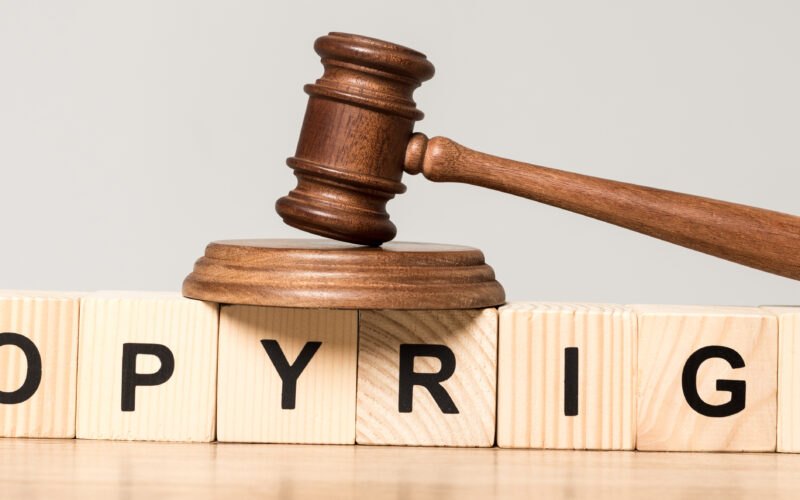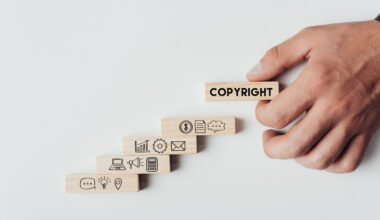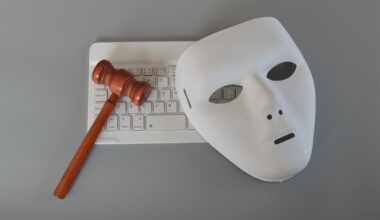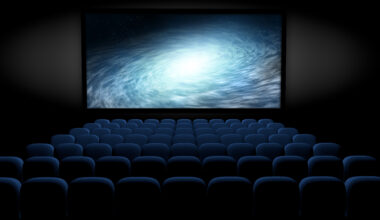History of the proceedings
As a collecting society (CS), the plaintiff filed a lawsuit against a capital company that was running a digital television platform in Poland. The suit consisted of two types of claim. First, the plaintiff was demanding money (plus interest), namely three times the copyright remuneration due for use of works belonging to the plaintiff’s repertoire (in the form of rebroadcasting and broadcasting television programmes on the digital platform operated by the defendant).
The plaintiff cited art.70(21)(3) of the Polish Act of February 4, 1994 on Copyright and Related Rights as grounds for the claim. This article says that “co-authors of an audiovisual work and performers” are entitled to the respective remuneration for broadcast of the work on television or other means by which works are made available to the public. The plaintiff pointed out that it was a CS exercising the implied right, under the relevant permit granted by the Polish Minister for Culture and National Heritage (the MC), to protect and manage copyright to worded, musical, worded-musical, choreographic and pantomime works, and also worded, musical, worded-musical and choreographic works in an audiovisual work, in particular in fields of exploitation such as wire or wireless rebroadcasting or broadcasting via visual or audio means via terrestrial stations and via satellite, and that it had right of action in this regard (art.105(1) of the Polish Copyright Act). For this reason it requested from the defendant (acting in the interest of authors) a remedy for damage suffered owing to culpable breach of art.70(21)(3) of the Polish Copyright Act in the form of non-payment of the remuneration described in this provision, i.e. for co-authors of an audiovisual work, with respect to rebroadcasting and broadcasting by the defendant of works managed by the plaintiff.
The plaintiff was also claiming a remedy for damage in the form of payment of a pecuniary sum of three times the relevant remuneration due to the artists (art.79(1)(3)(b) of the Polish Copyright Act). The plaintiff stipulated that the amount given in the statement of claim was a provisional calculation of that remuneration owing to the fact that it did not have sufficient information to calculate the amount in question precisely. It was for this reason that the plaintiff filed a second claim directed at the defendant for disclosure by the defendant of a range of information regarding works that it had broadcast and rebroadcast and the receipts generated by broadcasting activity. The grounds asserted for this claim were art.105(2) of the Polish Copyright Act, which says that within the scope of its activity a CS may demand that it be given information and access to documentation necessary to determine the value of remuneration and fees it is seeking. The plaintiff was seeking release of information per se (among other things in the form of lists) and a claim for access to documentation. The plaintiff was demanding in particular information as to which television programmes featuring worded, musical, worded-musical choreographic and pantomime works, including works used in audiovisual works, the defendant rebroadcast between 2009 and 2010, with the names of individual television programmes in particular months; the number of subscribers who were private individuals; and the number of terminals of subscribers who were legal entities. or organisational units which were not legal entities. It was also demanding among other things information as to which television programmes featuring worded, musical, worded-musical, choreographic and pantomime works, including works used in audiovisual works, the defendant broadcast between 2009 and 2010. The court of first instance (the Regional Court in Warsaw) issued a partial ruling, saying that in general the plaintiff’s claim for information was justified (although the wording of the findings stated in the ruling did not correspond exactly to the wording used in the statement of claim).
The court stated that the permit granted to the plaintiff by the MC covered collective management of copyright to worded, musical, worded-musical, choreographic and pantomime works, as well as worded, musical, worded-musical and choreographic works in an audiovisual work, in the following fields of exploitation: (1) recording on to media; (2) multiple copying; (3) placing on the market; (4) placing in computer memory; (5) public performance; (6) playing recordings in public; (7) screening; (8) exhibiting; (9) lending for use and renting; (10) wire or wireless visual or audio broadcasting via a terrestrial station; (11) broadcasting by satellite; (12) rebroadcasting; and (13) making a work publicly available in such a way that anyone could access it at a time and place of their choice. It compared this with the findings as to the scope of activity of the defendant. The court found that during the period to which the dispute related the defendant broadcast and rebroadcast television programmes by satellite on its digital platform.
The court of first instance stated that the television programmes that the defendant rebroadcast and broadcast between 2009 and 2010 consisted without limitation of works to which copyright was managed by the plaintiff, including worded, musical, worded-musical, and choreographic works in audiovisual works (in the fields of rebroadcasting and broadcasting). The defendant did not have the relevant agreement with the plaintiff at that time and was not paying any pecuniary amounts to the plaintiff. The court therefore concluded that the defendant had not been entitled to use the works belonging to the plaintiff’s repertoire. The court then proceeded to state that the plaintiff had right of action and moved that the defendant be ordered to provide the information and documentation. The court pointed out that under art.105(1) of the Polish Copyright Act in conjunction with the permit issued by the MC for collective management of copyright by the plaintiff there was an implied entitlement vested in the plaintiff (as a CS) to manage and protect copyright to worded, musical, worded-musical, choreographic and pantomime works, and also worded, musical, worded-musical and choreographic works in an audiovisual work (called by the court “component works”), in particular in fields of exploitation such as broadcasting by satellite or rebroadcasting. The court concluded that the defendant had not disproved this assumption and that the situation described in the second sentence of art.105(1) of the Polish Copyright Act had not arisen. This is a situation in which the assumption in question cannot be cited owing to claims of more than one CS to the same work. This is because during the course of the proceedings the defendant argued that there was one more CS (in addition to the plaintiff) that had a permit from the MC to perform collective management, but strictly audiovisual works. With respect to so called pre-existing works being included in audiovisual works, the scopes of management (MC permits) of the CSs matched. The court of first instance stated, however, that the assumption described in the second sentence of art.105(1) of the Polish Copyright Act was not excluded with respect to matching in abstracto of the scopes of collective management on the part of two CSs, but when a claim of those organisations is raised with regard to a specific work. Moreover the Regional Court took the view that the scopes of management of the plaintiff and the second organisation did not match.
The plaintiff was given the right to collective management of copyright to worded, musical, worded-musical, choreographic, and pantomime works, as well as worded, musical, worded-musical and choreographic works in an audiovisual work (component works, according to the Regional Court), while the other organisation was given the right to collective management of copyright to audiovisual works as a whole (and not to component works as in the case of the plaintiff). As a result the Regional Court concluded that the defendant made use of works belonging to the plaintiff’s repertoire (called consequently component works by the Regional Court) in the fields of broadcasting and retransmission during the period to which the dispute related. For this reason, under art.70(21)(2) of the Polish Copyright Act, the defendant had an obligation to pay remuneration for use of those works due to co-authors of an audiovisual work. In order to determine the amount of that remuneration, the plaintiff needed to obtain information and documentation which would enable data to be established necessary to determine the amount of remuneration based on the remuneration tables applied by the plaintiff. For this reason the court of first instance acknowledged, in a partial judgment, the claim for information which was the object of the lawsuit brought by the plaintiff. The defendant filed an appeal with the Appeal Court against the ruling. The appeal was extensive and a range of objections were presented within it, regarding both procedural formalities and substantive issues (issues relating to the merits of the case), cited in the ruling being commented upon.
The most serious was an objection regarding the contested ruling that the court of first instance did not correctly ascertain the boundaries of scopes of collective management on the part of the plaintiff and the competitive organisation handling management of audiovisual works. This was because correct specification of the scope of collective management based on the scope of the MC permit for collective management would determine the scope of representation by the CS (and resultant legal assumptions) and the scope of claims for information that could be demanded. The defendant took the view that the management exercised by the plaintiff covered only works not included in an audiovisual work (component works), i.e. those with regard to which the author had not entered into an agreement with the producer of that audiovisual work for creation of a work for the purpose of the audiovisual work or agreement for use of a pre-existing work in the audiovisual work. The plaintiff, it said, therefore managed only works which could be used entirely separately from use of the audiovisual work. Authors represented by the defendant would not therefore be recognised as co-authors of the audiovisual work. This is determined by the wording of the defendant’s permit, which refers to “works in an audiovisual work”. Meanwhile, as far as use of an audiovisual work is concerned, there is no parallel use of works contained in that work (so-called component works). In the case of an audiovisual work the issue is not the relationship “between works” as in the case of the plaintiff’s permit for collective management, but the relationship between shares in the joint right to the entire audiovisual work, which is not covered by the permit. In other words, works created for an audiovisual work cease to exist separately as of the moment that audiovisual work is created and is not used in that work in the normative sense despite the fact that within it, for example, camera work, a script or music can be detected. This is because an audiovisual work is not a collection of various so-called component works: it is a single separately existing work to which the co-authors have joint rights.
The Appeal Court ruling
For the greater part the court of second instance concurred with the defendant’s appeal, acknowledging that according to the scope of the permit the MC granted to the plaintiff, only works existing in their own right could be managed, and only where the economic rights had not been transferred to the producer of the audiovisual work.
The Appeal Court stated that the plaintiff managed copyright to worded, musical, worded-musical, and choreographic works existing in their own right and rights to worded, musical, worded-musical, and choreographic works in an audiovisual work in cases in which an agreement had been concluded which excluded the assumption described in art.70(1) of the Polish Copyright Act, i.e. when the producer of the audiovisual work did not acquire, under an agreement for creation of a work or agreement on use of a pre-existing work, economic rights to use that work as part of an audiovisual work as a whole. The court pointed out that until that assumption was disproven, the producer, and not the authors of the so-called component works, held the right to use the audiovisual work as a whole. The Appeal Court stressed that an audiovisual work is not a collection of various so-called component works; it is a single work, and that thus the defendant does not have the obligation to provide the plaintiff with the information as to “which television programmes featuring worded, musical, worded-musical, choreographic and pantomime works used in audiovisual works the defendant rebroadcast or broadcast”. In this regard, acknowledging the defendant’s appeal, the court dismissed the lawsuit, seeking an order to hand over information regarding those works. In the Appeal Court’s view, use of an audiovisual work does not require additional licences for its integral parts (for instance musical and worded-musical works).
The Appeal Court also commented on other claims brought by the plaintiff relating to rebroadcasting of works, concluding that the plaintiff did not have cause (under art.70(21)(3) of the Polish Copyright Act) to seek so-called additional remuneration for rebroadcasting of works. It supported this view by citing the position taken by the Polish Supreme Court in rulings of June 15, 2011 (case file number CSK 373/10) and of January 3, 2007 (case file number IV CSK 303/06) in which the Supreme Court confirmed that art.70(21)(3) of the Polish Copyright Act did not provide grounds for authors (and the CS representing them) to demand additional remuneration for cable rebroadcasting of works created for an audiovisual work (component works) or which under an agreement with the producer became part of an audiovisual work (pre-existing works). This is because the theory in this provision is only applicable to the broadcasting of works and thus the original act in relation to rebroadcasting.
The Appeal Court thus confirmed that art.70(21)(3) of the Polish Copyright Act was not grounds for the plaintiff to demand remuneration for rebroadcasting by the defendant of works created for, or which under an agreement with the producer become part of, an audiovisual work.
Commentary
The ruling in question is of considerable importance for the market of those making use of audiovisual works, in particular broadcasters or parties rebroadcasting.
Although it would be an oversimplification to say that audiovisual works are the only item broadcast on television channels and programmes, it is clear that they make up a substantial amount of airtime. An example of television programmes that contain audiovisual works are many types of feature films, such as animated films, recordings of theatre productions, documentaries and variations on films of this type such as reportages with fictional elements or newsreels, music videos, TV commercials, promotional programmes in fictional form, etc., and television formats made in audiovisual form in the sitcom or docu-soap genre, a considerable portion of which are reality shows. In turn, examples of television programmes which, although recorded in audiovisual form, are not always audiovisual works are for instance certain (not fictitious) TV quiz shows, talk shows, game shows, etc.; TV coverage of sports events; concerts shown on TV; live performances; television news programmes; TV schedule announcements (including appearances of announcers and discussions before screening, etc.); audiovisual musical and worded-musical programmes (apart from music videos and video clips); a live performance in a TV studio or performance with playback; background music during announcement of music videos etc.; and audiovisual current affairs programmes such as commentary on topical issues, interviews, debates, etc.
The Appeal Court concluded that the plaintiff did not have the right to manage audiovisual works and neither had it disproven the assumption regarding the producer of that work. The Appeal Court seemed to be saying that the current wording of the plaintiff’s permit for collective management with regard to rights to an audiovisual work (for example in a film) applied solely in cases in which use was separate from use of an audiovisual work (for example in a film) in its entirety. An author represented by the plaintiff can be the author of a so-called component—provided that the share (component) separate from the whole and existing in its own right is not used as part of the audiovisual work and related to a different field of exploitation, for example release of music created for an audiovisual work on CD. With regard to “audiovisual exploitation”, meanwhile, and thus also to television broadcasts, the plaintiff’s permit—the Appeal Court seems to be saying—covers the right to manage a work included in an audiovisual work (pre-existing work) provided that the work is not subject to an “exclusive exploitation right” of the producer of the audiovisual work whose rights the plaintiff does not represent in Poland. The plaintiff stated during the proceedings, contrary to the nature of an audiovisual work, that in the case of use of that work in television broadcasts there is some kind of parallel use of creative components, which use could be included in the wording of that permit for collective management for the purpose of the need to pay the plaintiff a share of the receipts and its giving consent to that exploitation and demanding information. The Appeal Court opposed this idea, saying that an audiovisual work is a single work which is separate in normative and ontological terms and not a set of various so-called component works. This statement has to be fully agreed with as in line with the concept of co-authorship in copyright law.
Under Polish copyright law an audiovisual work is a work to which copyright comes into existence at the outset and is vested in the authors, creating a joint right of those authors to a single copyrighted work, giving rise to a share in a joint right, expressed in the financial value of the share and prohibitive right arising due to author’s monopoly. When disposing of a share in a joint right (thereby transferring it to a producer) an author forfeits the prohibitive right, which is then vested in the buyer. The author may, however, continue to exercise its economic right provided it has reserved this right in an agreement or is afforded that right ex lege in copyright legislation. In Polish copyright law the issue is the right to a statutory share in the receipts for co-authors of an audiovisual work for use of an audiovisual work in the fields of exploitation mentioned in art.70(21) of the Polish Copyright Act. At the same time it is presumably not possible for a co-author to dispose of a stand-alone share (a component work which can be separated) because this could be detrimental for the remaining shares and the audiovisual work as a whole. This is because it is hard to imagine for example a film without the soundtrack or script written for it. This means that as of the moment the joint right is created individual artistic components do not constitute an object of copyright separate from the audiovisual work and are not separate works. On a normative basis, a special kind of “welding together” of those works as creative components in an audiovisual work occurs as a result of disposal of them and the creative process itself. As of that moment therefore these no longer have their structural distinctiveness. This is not a question of expiry of economic rights to these works (creative components) but the fact that they cannot be disposed of by their authors, who have transferred them to the producer on the basis of a legal assumption and were involved in the production process.
At this point it should also be taken into account that the risk of “reckless” disposal of a component has been restricted intentionally by the Polish legislature in the case of audiovisual works as a result of introduction of a legal assumption giving the producer of the audiovisual work economic copyright to the audiovisual work, including the “exclusive” right to use it, which covers everything that functions “within” that work (art.70(1) of the Polish Copyright Act). It can therefore be concluded that in this regard regulation under art.70(1) of the Polish Copyright Act constitutes a rule, whereas the situation described in art.9(2) of the Polish Copyright Act, which allows for the right of disposal of a component, is exceptional, i.e. not referring to audiovisual works and integral works. Therefore, when we are talking about use of the “entire” audiovisual work, the question of use of the components functioning within it is of no relevance and does not arise.[1] It is significant for the line of argument being pursued here that the creation of a joint right is determined by the process (and also, secondarily, the time) by which a new work is created, and thus the elements of a joint arrangement between particular authors as to the overall form of the new work even if each of their shares was created at a different time of work on the audiovisual work and at different creative levels. This could translate into the value of shares in the joint right. Another significant factor is that the creative component in the forming of the work as a whole is not vital for co-authorship to come into existence, which means that partial joint authorship during the process of creating an audiovisual work is possible (see ruling of Polish Constitutional Tribunal of May 24, 2006 (K 5/05).[2] It is noted in the literature that the element of “arrangement” of “everybody with each other” in a uniform and coherent vision of the whole is not vital. Sometimes reference is made to the “narrow” way in which the arrangement is perceived. This element does not necessarily have to relate to multi-party arrangements. This is because these “sufficient” elements of the arrangement which are determinant with regard to joint authorship are given, such as “joint inspiration, exchange of ideas, criticism, concessions and cooperation” within one artistic intention.[3]
To reiterate, the plaintiff was not entitled to demand information from the defendant as to the complete structure of an audiovisual work. As a party broadcasting or rebroadcasting, the defendant did not broadcast or rebroadcast that “structure” (components) but broadcast or rebroadcast the entire audiovisual work, as the Appeal Court seems to be saying. The disclosure obligation on the part of the defendant was rightly restricted by the Appeal Court to cover only things that were not the audiovisual work. In accordance with the structure described here of the audiovisual work as a work of co-authorship under Polish law, the Appeal Court justifiably added that no additional licence is needed encompassing the individual parts of the work, which was the plaintiff’s intention, for broadcast or rebroadcast of an audiovisual work. This would mean that the plaintiff could not be deemed to be the proper organisation representing the rights of the co-authors of audiovisual works and in this regard was not entitled to make use of evidentiary tools implemented into Polish law on the basis of the legal assumption created in the first sentence of art.105(1) of the Polish Copyright Act, which provides that a collecting society has management and protection power with respect to the fields of exploitation which are subject to collective management and that it has right of action in this respect. The Appeal Court confirmed that this assumption functions only in favour of a CS which represents the relevant category of entities. The plaintiff could have been acknowledged to be the organisation proper solely with respect to pre-existing works which become part of the audiovisual work (for example with regard to a pre-existing song of a rock band used in a film, etc.), because a work of this kind is created outside of the “co-authorship structure” of the audiovisual work. This would, however, only be possible provided the plaintiff was successful in disproving the assumption of the producer of the audiovisual work, which rights the plaintiff, as was ascertained in the case, did not represent.
The ruling being discussed here is significant also beyond the issues relating to seeking of remuneration or demanding information for use of copyrighted works, as it also extends to the issue of so-called manufacture and import charges described in art. 20 of the Polish Copyright Act (reprographic levies). Under art.20(1) of the Polish Copyright Act producers and importers of:
(i) video players, audiotape players and other similar devices;
(ii) photocopiers, scanners and other similar reprographics devices with which copies can be made of whole or part of a published work;
(iii) blank data carriers used for making recordings for personal use, of works or items subject to related rights,
using the devices listed above, have the obligation to pay to CSes acting for authors, performers, producers of phonograms and videograms and publishers, fees not exceeding 3 per cent of the amount payable for sale of the types of devices and data carriers listed above.
This fee is divided up further in accordance with art.20(2)–(4) of the Polish Copyright Act proportionally between the authors, performers, producers of phonograms and videograms and publishers. Importantly, art.20(5) of the Polish Copyright Act provides for a statutory power of issue by the Minister for Culture and Protection of National Heritage of a decree specifying categories of devices and data carriers and the level of manufacture and import charges, using as a guide the capacity of the device and data carrier to make multiple copies of works as well as whether they have been designed to perform functions other than making copies of works, as well as the procedure by which collecting societies managing copyright and related rights entitled to collect fees collect and distribute them.
These issues are regulated in a decree issued by the Polish Minister for Culture of June 2, 2003 specifying the categories of devices and data carriers used to record works and the fees payable on those devices and data carriers for sale of those devices by producers and importers.[4]
The ruling being commented upon may be important for the organisation proper entitled to receive the discussed levies. Minister of Culture Decree §3 and §4 lists the collecting societies which are entitled to charge and distribute manufacture and import fees. Under §6 of the Minister of Culture Decree, however, levies can be paid to collecting societies which represent the proper holders of copyright and related rights (authors, performers, and producers of phonograms and videograms). This is because there are three phases to the charging of the fees in question in Poland. These are (1) collection; (2) transfer to representatives; (3) further division among the entitled parties. In this context the transfer to the representatives of the proper entities is determined by the scope of the permit held by a given collecting society for collective management representing those entities. Based on the assertions made in the ruling under discussion, for the sake of consistency, it should be concluded that the plaintiff should not receive a share of the fees charged on devices used to make multiple copies of audiovisual works. At the present time in Poland this problem may affect for example digital television decoders (the so-called set-top box and their hard drives).
The article was first published in European Intellectual Property Review, 2014, 36, 1, S. 61 – 65.
* Janusz Piotr Kolczyński is Managing Attorney at Law and Przemysław Dominik Antas is Attorney at Law trainee at C.R.O.P.A., the TMT and IP law firm. The authors wish to thank Jon Tappenden for his great help in preparing the text of the article.
[1] Also stated by Professor E. Traple, “Prawo współtwórcy dzieła audiowizualnego do udziału w dochodach z eksploatacji tego dzieła w polskim prawie autorskim”, ZN UJ. PWiOWI z. 69, s.47, 57. The author rightly points out that all the time an audiovisual work is distributed as a whole the potential susceptibility of certain components to a separate existence is irrelevant. [2] Constitutional Tribunal Case Law Series A 2006, No.5, item 59. [3] See D. Sokołowska, “Współtwórczość a utwór audiowizualny” in K. Lewandowski (ed.), Utwór audiowizualny, zakres pojęcia (Warszawa: 2011), pp.61 et seq. and the literature mentioned within it. [4] Journal of Laws of 2003, No.105, item 991, as amended.









